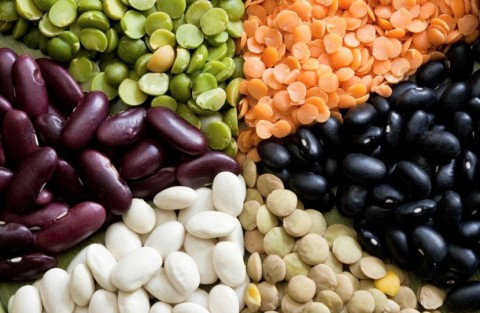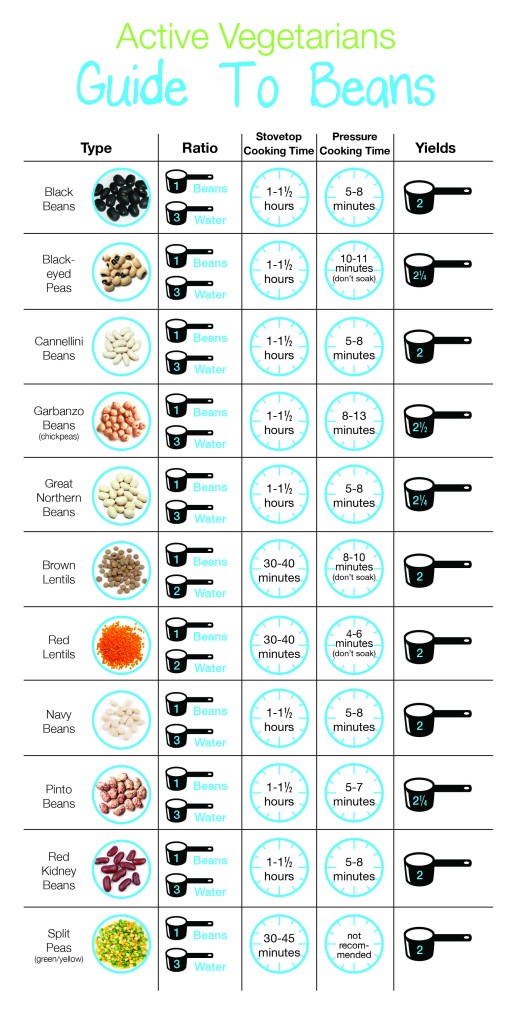DrCarney.com Blog
How do I Cook Beans?
Foods that have sustained many different cultures for many centuries are generally quite simple to prepare. This is true with beans. There are really only four steps between us and a pot of home-cooked beans ready to be ladled over a bed of quinoa, mashed and folded into a tortilla, or sprinkled on a salad.
Step One: Choose and Sort
Although dry beans don’t spoil, old beans can taste bitter and may not fully soften no matter how long they are cooked. Therefore, choose a bag of beans that's fresher rather than one that’s been in the cupboard a couple of years.
Because beans are a natural food, they must be cleaned before cooking. First measure the amount of beans to be cooked, then pour them out onto the counter or a tray. Sort through the beans, removing stones, debris, and any beans that are shriveled or discolored.
Step Two: Rinse
Rinse the beans in a colander under running water or swish them in a pot with water, changing the water once or twice. This removes dirt or dust clinging to the beans.
Step Three: To Soak or Not to Soak?
Soaking beans before they are cooked is a point of debate in the bean-cooking community.
Advantages: Soaking beans reduces cooking time. If seasonings are included in the soak water, the beans will get a flavor boost as they swell. However, do not include salt in the soak water because it causes the beans to become tough. Finally--and maybe most importantly, some people believe that soaking beans cuts down on intestinal gas.
Disadvantages: Soaking adds to the overall time it takes to prepare beans, and some people insist that soaked beans have a less robust flavor after they are cooked.
If we choose to soak, there are three different methods to choose from.
Traditional soak: Put beans in a pot or bowl, and add water until it is two to three inches above the level of the beans. Soak beans for eight hours or overnight. If the weather is warm, place the bowl in the refrigerator to prevent fermentation. Remove any beans that float to the top.
Hot soak: Boil five cups of water for every cup of dry beans. Pour boiling water over the beans and let them soak in the hot water for four to five hours. Remove any beans that float to the top.
Quick soak: Put beans in a cooking pot. For each cup of beans, add three cups of water. Bring the beans to a boil for three to four minutes, then cover the pot and remove it from the heat. Let the beans stand for one hour. Remove any beans that float to the top.
After the soak, you can choose to boil the beans in the water used for soaking, or pour off the water and rinse the beans until the water runs clear.
Step Four: Cook
Beans can be cooked in a slow cooker, on the stovetop, or in a pressure cooker. No matter how we cook the beans, seasonings can be added to the cooking water. Onion, garlic, hot or sweet peppers, celery, bay leaves, or herbs are all great choices to enhance the flavor of the finished product. Salt--if we choose to use it at all--should not be added until after the beans have been thoroughly cooked since salting the beans early in the cooking process can result in beans which never fully soften.
Cooking beans in a slow cooker may be the easiest option since it requires very little monitoring. Simply add beans, seasonings, and water to the cooker. If the beans have been soaked, fill the slow cooker with water until it reaches one to two inches above the level of the beans. If beans have not been soaked, add enough water to reach two to three inches above the level of the beans. Turn the slow cooker on to low and allow to simmer for four to eight hours. Small legumes like lentils or split peas will not require as many hours as larger beans like pinto or kidney.
In the "Guide to Beans" chart, measurements and times are given for stovetop and pressure cooking. All of the cook times are for soaked beans except for lentils, split peas, and black eyed peas--none of which require soaking. To cook unsoaked beans, increase the water, cover with a lid (allow for a small crack for stem to escape) and extend the cooking time. Keep in mind what the final product will be used for. Beans which will be used in a salad will need to be a little firmer--thus cooked for a shorter time--than beans used in a soup.
Step 5: Eat and Store
Once the beans are cooked to satisfaction, they are ready to be eaten, added to a recipe, or stored for future meals.
For people on a low-fat, whole-food plant-based diet, eating beans daily quickly becomes a way of life. There are some time-saving tricks to keep ourselves supplied with this great source of energy and nutrition. Some people use a small crock-pot and cook legumes most nights while they sleep. This allows them to wake up to a warm pot of beans ready to enjoy for breakfast in the morning and to use for meals during the day. Other people find it easier to cook a large pot of beans once or twice a week. When the beans have cooled, they spoon the beans into individual containers ready for a quick lunch, or the beans can be stored in small zip-lock bags and frozen for a later date.
The great thing about beans is that there are almost as many ways to cook and eat them as there are people who prepare them. The only way to go wrong with beans is to NOT eat them. Beans have been called “the cornerstone of every longevity diet in the world,” yet they are almost as economical as fresh air and walking. And now that we know how to cook them, we can take easily take advantage of all the health and variety that beans offer.
Visit our Starch-Smart® community and look for bean recipes. Better yet, join the community and add some recipes of your own.
Here's additional information on the health benefits of beans:
(1) Can Eating Beans Promote Longevity?
(2) Eating Beans Lowers Cholesterol
(3) Phytic Acid in Grains? No Problem!
Scroll Down Page to Leave Comments

Got Questions?
We would love to receive your questions. Join in the Starch-Smart Discussions on DrCarney.com by signing up for a free membership to the Dr. Carney Community.
When you subscribe to the blog, we will send you an e-mail when there are new updates on the site so you wouldn't miss them.





